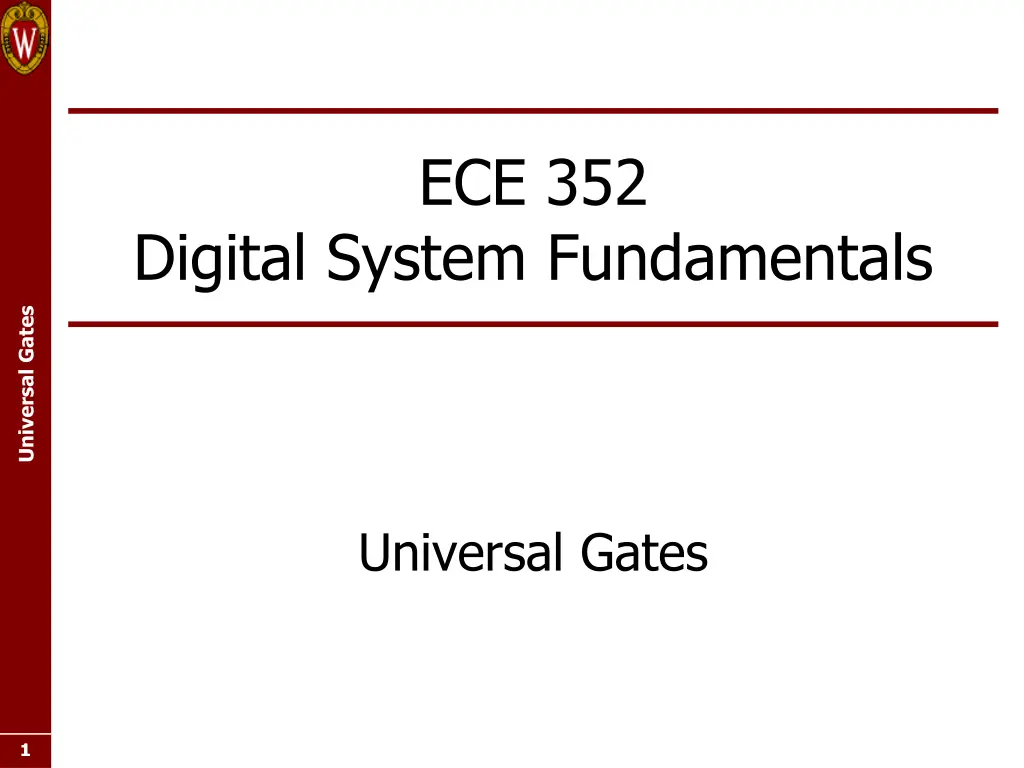
Understanding Universal Gates in Digital Systems
Learn about universal gates in digital systems, which can implement all basic Boolean operations like AND, OR, and NOT. Explore how to convert any combinational circuit using these gates and prove a gate is universal with examples.
Uploaded on | 0 Views
Download Presentation

Please find below an Image/Link to download the presentation.
The content on the website is provided AS IS for your information and personal use only. It may not be sold, licensed, or shared on other websites without obtaining consent from the author. If you encounter any issues during the download, it is possible that the publisher has removed the file from their server.
You are allowed to download the files provided on this website for personal or commercial use, subject to the condition that they are used lawfully. All files are the property of their respective owners.
The content on the website is provided AS IS for your information and personal use only. It may not be sold, licensed, or shared on other websites without obtaining consent from the author.
E N D
Presentation Transcript
ECE 352 Digital System Fundamentals Universal Gates Universal Gates 1 1
Universal Gates Universal: a gate or group of gates that can implement all basic Boolean operations AND, OR, NOT are together universal NAND, NOR are each universal Universal Gates Example: NAND gate Can implement F = A A A A B A B Can implement F = A B A B = A B A A Can implement F = A+B A B = A+B B B 2 2
Universal Gates Can convert any combinational circuit to use universal gates using Boolean algebra Often using De Morgan s in addition to other identities Universal Gates Can use a visual approach by drawing the circuit, and using Boolean algebra with the gates A B = A+B A+B = A B A = A 3 3
Universal Gates Example Universal Gates 4 4
How to Prove Gate is Universal? Example: M gate, where M = A + B A M B Use one or more M gates to implement either NOT and OR NOT and AND NAND NOR Universal Gates The M gate is universal! F = X F = X + Y X X 0 Y X 0 A A B A B X + Y = X + Y X + 0 = X M M M B 5 5
ECE 352 Digital System Fundamentals Universal Gates Universal Gates 6 6
